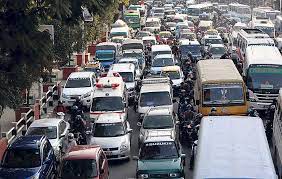Title: The Growing Challenge of Too Many Vehicles: Exploring the Impact and Solutions
Introduction
In recent years, the world has witnessed a significant increase in the number of vehicles on roads. This surge in vehicular population has brought both benefits and challenges to society. In this blog, we delve into the impact of too many vehicles and explore potential solutions to address this pressing issue.
The Impact of Too Many Vehicles
1. Traffic Congestion: One of the most visible consequences of an abundance of vehicles is traffic congestion. Roads become clogged, leading to longer travel times, increased fuel consumption, and heightened levels of stress among commuters. Traffic congestion not only hampers productivity but also contributes to air pollution and road accidents.
2. Air Pollution and Environmental Concerns: The rise in the number of vehicles has resulted in increased air pollution, contributing to the deterioration of air quality. Harmful emissions from vehicles, such as carbon monoxide, nitrogen oxides, and particulate matter, have detrimental effects on public health and the environment, leading to respiratory problems, climate change, and ecological imbalance.
3. Strain on Infrastructure: The surge in vehicles poses a strain on existing infrastructure. Roads, parking facilities, and public transportation systems may struggle to accommodate the growing demand. Insufficient infrastructure can lead to inefficiencies, increased maintenance costs, and inadequate accessibility for pedestrians and cyclists.
4. Safety Hazards: With more vehicles on the road, the risk of accidents and collisions increases. Overcrowded roads, reckless driving, and inadequate enforcement of traffic regulations contribute to road safety hazards. Pedestrians and cyclists may face increased vulnerability, and the overall safety of road users is compromised.
Addressing the Issue
1. Promoting Sustainable Transportation: Encouraging the use of sustainable transportation alternatives can help alleviate the burden of excessive vehicles. Governments and urban planners should prioritize the development of efficient public transportation systems, including buses, trams, and metros, to provide affordable and convenient options for commuters. Additionally, promoting non-motorized modes of transport, such as walking and cycling, can reduce vehicular congestion and improve overall health and well-being.
2. Implementing Carpooling and Ride-Sharing Initiatives: Carpooling and ride-sharing services can significantly reduce the number of vehicles on the road. By encouraging people to share rides, these initiatives help optimize vehicle occupancy, decrease traffic congestion, and lower carbon emissions. Governments and organizations can incentivize and promote such services through policy interventions and awareness campaigns.
3. Enhancing Infrastructure and Urban Planning: Investments in infrastructure development are crucial to accommodate the increasing vehicular population. Governments should focus on expanding road networks, improving traffic management systems, and providing adequate parking facilities. Additionally, incorporating smart city technologies, such as intelligent traffic signals and real-time information systems, can optimize traffic flow and reduce congestion.
4. Encouraging Electrification and Alternative Fuels: The adoption of electric vehicles (EVs) and alternative fuels can significantly reduce the environmental impact of transportation. Governments can provide incentives, subsidies, and infrastructure support to promote the use of EVs. Expanding charging infrastructure and investing in renewable energy sources will facilitate the transition to a greener and more sustainable transportation ecosystem.
5. Raising Awareness and Promoting Behavioral Change: Educating the public about the consequences of excessive vehicles and the benefits of sustainable transportation choices is crucial. Awareness campaigns can encourage individuals to use public transportation, carpool, or opt for eco-friendly modes of transport. Additionally, promoting eco-driving practices and responsible vehicle ownership can contribute to reducing the negative impact of vehicles.
Conclusion
The surge in the number of vehicles poses significant challenges to society, including traffic congestion, air pollution, strain on infrastructure, and safety hazards. However, with a comprehensive approach that includes sustainable transportation options, infrastructure development, alternative fuels, and behavioral




